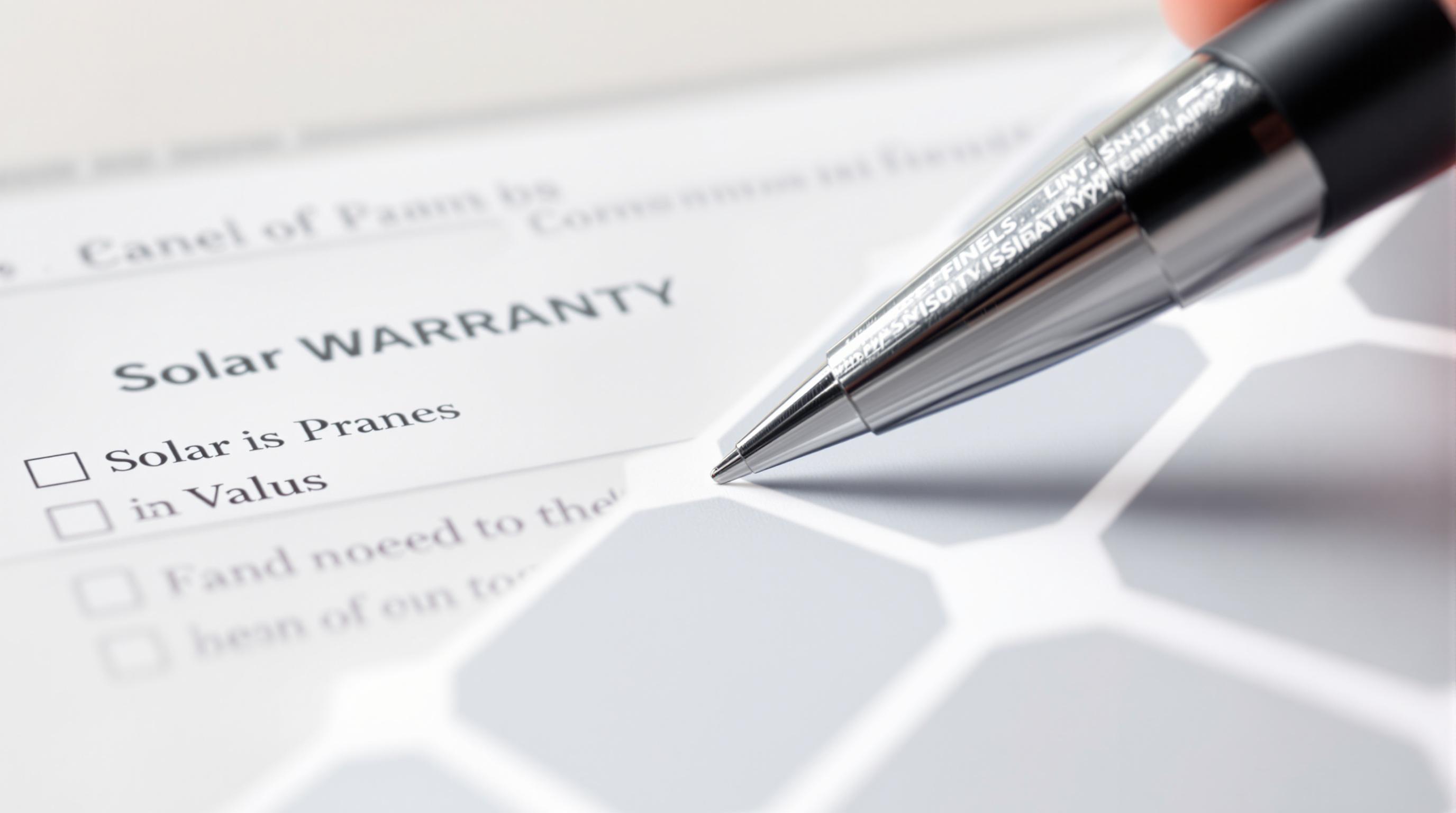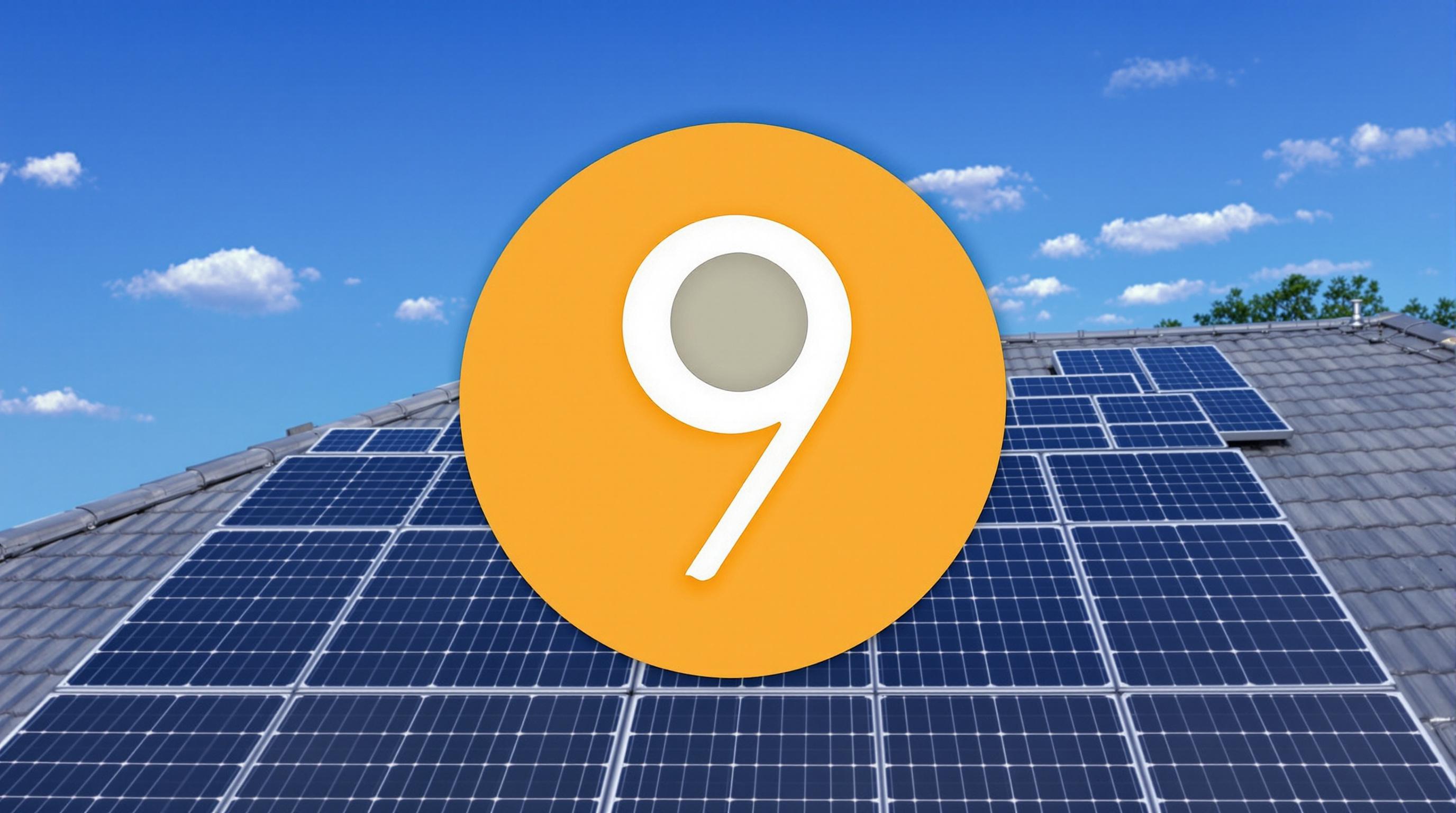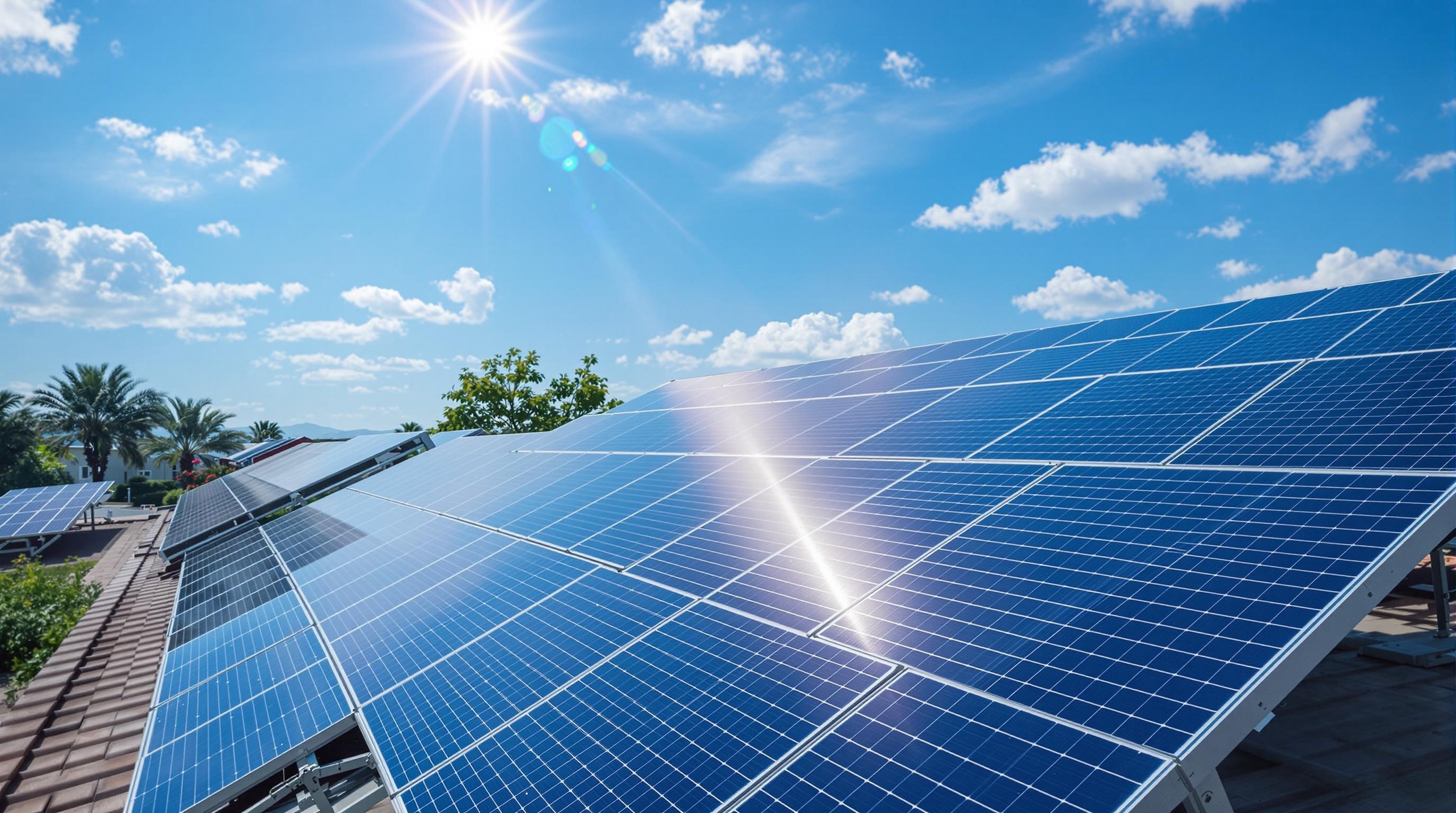Related Articles
- 7 Game-Changing Off-Grid Solar Kits from the Last 5 Years Ranked for Peak Performance and Reliability
- Uncovering the Role of Solar Warranty Disputes in Shaping Consumer Trust and Industry Accountability
- The Role of Behavioral Economics in Shaping Unexpected Solar Investment Decisions Among Rural Entrepreneurs
- Top 5 Emerging Solar Panel Brands Since 2019 That Outlast the Competition in Real-World Tests
- Top 6 Trailblazing Ground Solar Frames Unveiled Since 2019 Revolutionizing Installation Speed and Durability
- How Biodegradable Mounting Materials Could Revolutionize Eco-Friendly SolarRoof Installations by 2030
7 Surprising Ways Solar Warranty Fine Print Influences Your Panel’s Performance and Resale Value
7 Surprising Ways Solar Warranty Fine Print Influences Your Panel’s Performance and Resale Value
7 Surprising Ways Solar Warranty Fine Print Influences Your Panel’s Performance and Resale Value
1. Coverage Scope Determines Long-Term Reliability
The scope of your solar panel warranty plays a crucial role in ensuring long-term system reliability. While many warranties highlight power output guarantees, the fine print often reveals what specific components are covered and for how long. For example, some warranties cover only the panels themselves, while others extend to inverters or mounting hardware.
Understanding these details is vital because components like inverters have shorter lifespans than panels and can affect overall system performance if not covered. Failure to verify these specifics could leave homeowners vulnerable to unexpected repair costs, reducing both panel efficiency and the financial attractiveness of the installation.
Research by the Solar Energy Industries Association (SEIA) emphasizes that comprehensive component coverage leads to fewer system failures and higher user satisfaction, underscoring the need for buyers to read warranty fine print carefully before purchase.
2. Performance Guarantee Terms Affect Energy Output Over Time
Most solar panel warranties include a performance guarantee promising a certain percentage of rated output for a specific time frame. However, nuances in the guarantee terms can significantly impact your energy returns. Some warranties promise 90% output after 10 years and 80% after 25 years, while others offer more lenient terms.
The fine print often outlines the degradation rate, which indicates how much panel efficiency declines annually. A steeper degradation rate means reduced energy production and, consequently, lower utility savings. This degradation directly influences the resale value, as buyers seek panels maintaining higher output longer.
According to a study published in the Journal of Renewable and Sustainable Energy, warranties with stricter performance guarantees are associated with better long-term panel reliability and higher market value upon resale.
3. Exclusions Can Void Warranty Protection Unintentionally
Warranty exclusions commonly found in fine print may void your coverage without your immediate awareness. Typical exclusions include damage from natural disasters, improper installation, or unauthorized repairs. Some warranties also exclude shading-related issues or performance drops caused by environmental factors such as humidity or salt spray.
Ignoring these details could lead to costly repairs being your responsibility, which may degrade system performance and affect property valuation. Potential buyers in the resale market often scrutinize warranty records and any claims history, making exclusions a red flag.
Experts from the National Renewable Energy Laboratory (NREL) advise consumers to work closely with certified installers to ensure compliance with warranty requirements and avoid inadvertent exclusions.
4. Transferability Influences Home Resale Appeal
Whether a solar warranty is transferable to new owners significantly impacts the resale value of a home equipped with solar panels. Some warranties allow only the original purchaser to claim benefits, while others permit transfer with or without fees. Transferability ensures that new homeowners can benefit from repair and performance protections.
Warranties with limited or no transfer options can deter potential buyers, reducing the attractiveness of a solar-equipped property. Conversely, transferable warranties signify ongoing value and reliability, boosting buyer confidence and marketability.
Real estate professionals note that homes with transferable solar warranties often sell faster and at premium prices, highlighting the financial significance of transfer terms found in warranty fine print.
5. Claim Process Difficulties Can Discourage Warranty Use
The complexity of the warranty claim process, often hidden within fine print, affects how easily owners can exercise coverage. Requirements such as extensive documentation, strict timelines, or mandatory use of specific service providers may hinder prompt repairs or replacements.
Delays or denial risks during claims can prolong reduced panel performance and escalate maintenance costs. Frustrated owners might forego claims altogether, leading to diminished system output and compromised investment returns.
Consumer reports suggest that clear, straightforward claim procedures correlate with higher satisfaction and better long-term panel functioning, encouraging buyers to prioritize warranties with simple claim processes.
6. Warranty Length May Not Reflect Actual Protection
At first glance, a longer warranty period appears beneficial, but fine print often reveals that not all years are equal in terms of protection level. For instance, early years might cover full repairs, while later years may offer limited or prorated coverage, impacting repair costs.
This graduated protection means that after a certain period, homeowners might bear more expense even though the warranty technically remains valid. The practical value of the warranty depends on the extent and conditions of coverage throughout its entire duration.
Industry analysis by Clean Energy Authority stresses the importance of scrutinizing warranty terms year-by-year rather than just overall length, to truly understand the protection and its effect on system longevity and resale prospects.
7. Impact of Manufacturer Reputation on Warranty Reliability
A warranty’s value is only as good as the company backing it. Fine print rarely addresses manufacturer solvency or history of honoring claims, but these factors deeply affect warranty reliability. Choosing reputable manufacturers with strong financials ensures greater likelihood of warranty fulfillment.
Warranties from lesser-known companies may offer attractive terms but carry higher risk if the company fails or goes out of business. In such cases, warranty coverage becomes worthless, reducing panel value and complicating maintenance.
Industry watchdogs recommend researching manufacturer track records and warranty claim fulfillment rates before purchase, as these insights are crucial to securing dependable protection and preserving system worth.
8. Impact of Installation Conditions on Warranty Validity
The warranty fine print often specifies precise installation conditions that must be met to maintain coverage. These detailed requirements include optimal panel placement, approved mounting hardware, and adherence to electrical codes. Deviations from these can lead to voided warranties.
Incorrect installation may cause reduced panel efficiency or accelerate wear, but without coverage, repair costs fall on the owner. Furthermore, unpermitted or non-compliant installations can decrease property appeal and resale values.
According to the U.S. Department of Energy, utilizing certified installers who follow warranty-specific guidelines is essential to ensuring valid protection and maximizing panel performance over time.
9. Influence of Regular Maintenance Clauses on Performance
Many solar warranties include clauses requiring periodic maintenance to retain coverage. These stipulations might require professional cleaning, inspections, or system checks within specified intervals. Failure to comply can result in denied claims and reduced warranty benefits.
Proper maintenance ensures optimal panel efficiency and maximizes lifespan, directly correlating with energy production and home value. However, maintenance requirements add ongoing costs and responsibilities to the owner, which must be factored into the total investment.
Industry data show that homeowners who follow warranty maintenance provisions tend to enjoy better system durability and higher resale prices, underscoring the practical effects of these fine print clauses.
10. Limitations on Environmental Damage Coverage Affect Replacement Costs
Solar warranties often limit or exclude coverage for damage caused by environmental factors like hail, wind storms, or snow loads. These limitations, usually buried in the fine print, can dramatically influence repair or replacement expenses after adverse weather events.
Homeowners in high-risk areas may face significant out-of-pocket costs if their warranty excludes certain environmental hazards, potentially decreasing overall panel performance if repairs are delayed or unaffordable.
A study from the Institute for Energy Research recommends that buyers review environmental coverage exclusions carefully and consider supplemental insurance or warranties to protect against these costly risks and safeguard home investment.




